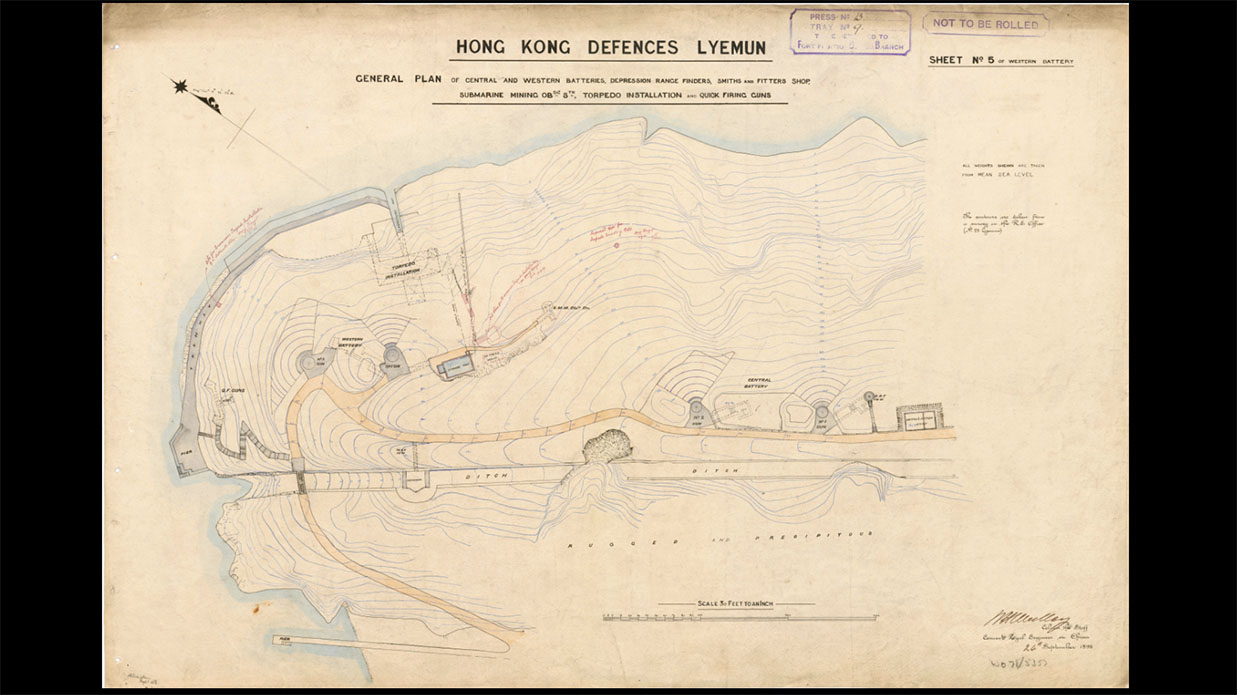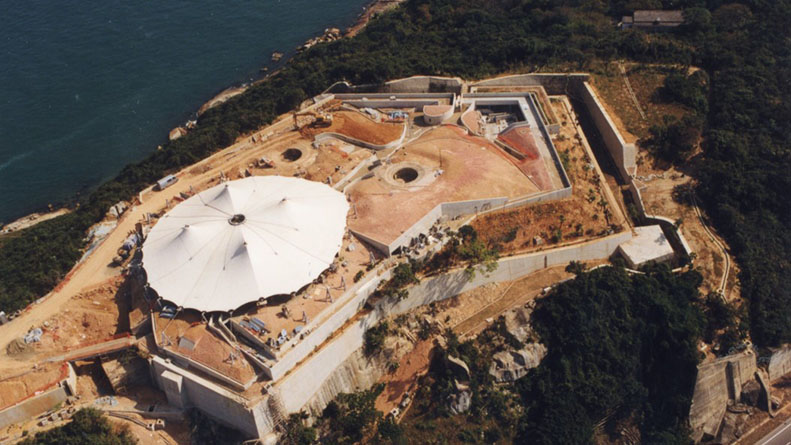History
Lyemun occupies a strategic position guarding the eastern approach to Victoria Harbour, where the narrowest watercourse between Hong Kong Island and the Kowloon Peninsula is located. In the 1880s, given the potential threat from European Powers, the British built fortifications at A Kung Ngam, Shau Kei Wan, including the Lyemun Fort in 1887. The fortification consisted of an Redoubt which was the heart of the defence, and the Central, West, Pass and Reverse Batteries. A Brennan Torpedo station was also installed; it is one of the few that have survived to the present day.
To build the Redoubt, the British Royal Engineers first dug up an area of 7,000 square meters at the summit of the Lyemun headland. They constructed 14 casemates to function as barrack rooms, an ammunition store, a coal store, a cook house, and so forth. The structures were then concealed by earth. The construction was largely completed by 1887. There was an open courtyard in the centre of the Redoubt for assemblies. The Redoubt was armed with two 6-inch breech- loading disappearing guns and was surrounded by a ditch to provide a barrier. The Redoubt Battery and the other batteries nearby covered the Lyemun Channel. In the 1890s, on the shore of the Lyemun headland, the British installed a station for Brennan Torpedoes which were considered to be the world's most advanced underwater weapon.


In the early 20th Century, new batteries were installed on both sides of Lyemun Pass to reinforce the defences: the Pak Sha Wan and Sai Wan batteries, near Lyemun Fort, as well as the Pottinger and Gough batteries at Devil's Peak, on the opposite shore. The obsolete guns in Lyemun Fort were then gradually removed.


Lyemun was an important battlefield during the Battle for Hong Kong in 1941. After the defending troops retreated to Hong Kong Island from Devil's Peak in Kowloon on 13 December, Japanese troops used Devil's Peak as an observation post for bombarding British fortifications on Hong Kong Island in the following days. The battle across Lyemun Pass continued for a few days. On the night of the 18 December, Japanese troops landed at three points at Lyemun, on Hong Kong Island. Owing to the disparity of strength between the two sides, Lyemun Fort, Lyemun Barracks, and the Sai Wan Battery, fell into Japanese hands within five hours.
Lyemun Fort was no longer strategically important after the war. British Forces continued to use it as a training ground until 1987, when it was finally vacated, and the site was returned to the Government. In view of its historical significance and unique architectural features, in 1993, the former Urban Council decided to conserve and develop Lyemun Fort into a museum of coastal defence. The Hong Kong Museum of Coastal Defence (HKMCD) was opened to the public on 25 July 2000.




